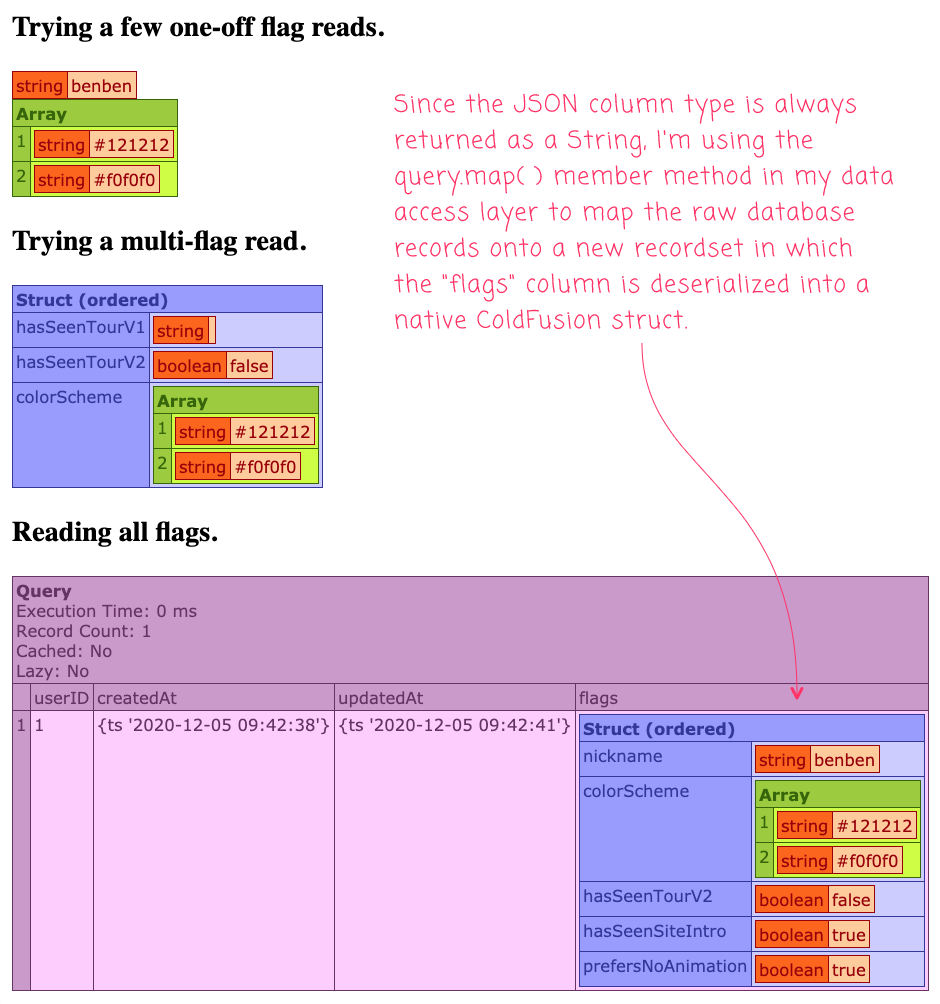
Let's look at the Totals column in the ga_session dataset. Nested Array/ Table: a table built with multiple key-value objects in a hierarchical format To query a nested JSON object in MySQL, you can use the JSONEXTRACT () function to extract the value of the nested key and then use comparison operators to filter the results.Key-value object: a single record which consists of multiple named or indexed fields (or keys) paired with values.JSON data in MySQL is treated as its own data type, a JSON string, and can appear in 2 main forms: All queries are written in Holistics using MySQL 8.0. The examples below use the ga_sessions sample dataset provided by Google.
#MYSQL JSON COMPARE COLUMN WITH A JSON OBJECT HOW TO#
In this tutorial, you have learned about the MySQL JSON data type and how to use it for storing JSON documents in the database.In this article, we will demonstrate how to use the JSON_EXTRACT() and JSON_TABLE() functions in MySQL8.0 to convert JSON table into tabular data for analysis and reports, and also how to utilise it in Holistics for drag-and-drop reports.


This document describes how to create a table with a JSON column, insert JSON data into a. To calculate the total revenue by the visitor, you use the following query: SELECT visitor, SUM(properties-> '$.amount') revenueįROM events WHERE properties-> '$.amount' > 0 GROUP BY visitor BigQuery natively supports JSON data using the JSON data type. The output of the query is as follows: + -+-+ To get the browser usage, you can use the following statement: SELECT browser-> '$.name' browser,įROM events GROUP BY browser-> '$.name' To remove the quote marks, you use the inline path operator ( ->) as follows: SELECT id, browser-> '$.name' browserĪs you can see in the following output, the quote marks were removed: + -+-+ Notice that data in the browser column is surrounded by quote marks. This query returns the following output: + -+-+ To pull values out of the JSON columns, you use the column path operator ( ->). Let’s insert some data into the events table: INSERT INTO events(event_name, visitor,properties, browser) They are used to store properties of an event and specification of the browser that visitors use to browse the website. The properties and browser columns are the JSON columns. An event also has a name e.g., pageview, purchase, etc., The visitor column is used to store the visitor information. CREATE TABLE events(Įach event in the events table has an id that uniquely identifies the event. To store this information, we will create a new table called events. Some visitors may just view the pages and other may view the pages and buy the products. Suppose, we have to track the visitors and their actions on our website. When you query data from the JSON column, the MySQL optimizer will look for compatible indexes on virtual columns that match JSON expressions. Instead, you can create an index on a generated column that contains values extracted from the JSON column. In addition, a JSON column cannot be indexed directly. Notice that a JSON column cannot have a default value. To define a column whose data type is JSON, you use the following syntax: CREATE TABLE table_name (Ĭode language: SQL (Structured Query Language) ( sql )

The storage of a JSON document is approximately the same as the storage of LONGBLOB or LONGTEXT data. The JSON binary format is structured in the way that permits the server to search for values within the JSON document directly by key or array index, which is very fast. MySQL stores JSON documents in an internal format that allows quick read access to document elements. The native JSON data type allows you to store JSON documents more efficiently than the JSON text format in the previous versions. MySQL supports the native JSON data type since version 5.7.8. Summary: in this tutorial, you will learn how to use MySQL JSON data type to store JSON documents in the database.


 0 kommentar(er)
0 kommentar(er)
